Trees Birds Mammals Fish Amphibians Reptiles
Wild Algarve
Bookshop
Cystolepiota pulverulenta (Huijsman) Vellinga
Phylum: Basidiomycota - Class: Agaricomycetes - Order: Agaricales - Family: Agaricaceae
Distribution - Taxonomic History - Etymology - Identification - Culinary Notes - Reference Sources
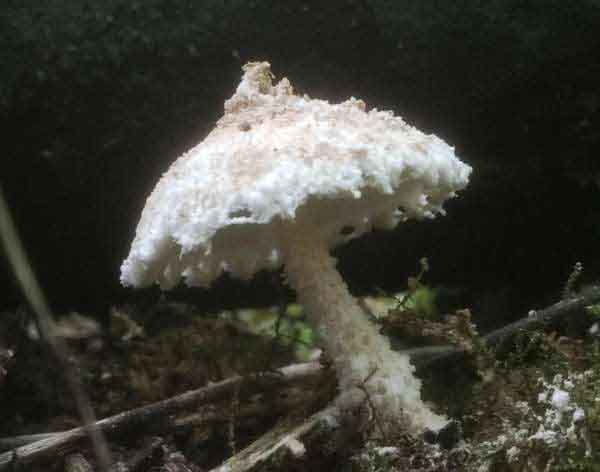
These spooky-looking mushrooms usually grow in dark damp places, and perhaps partly for this reason they are not often recorded.
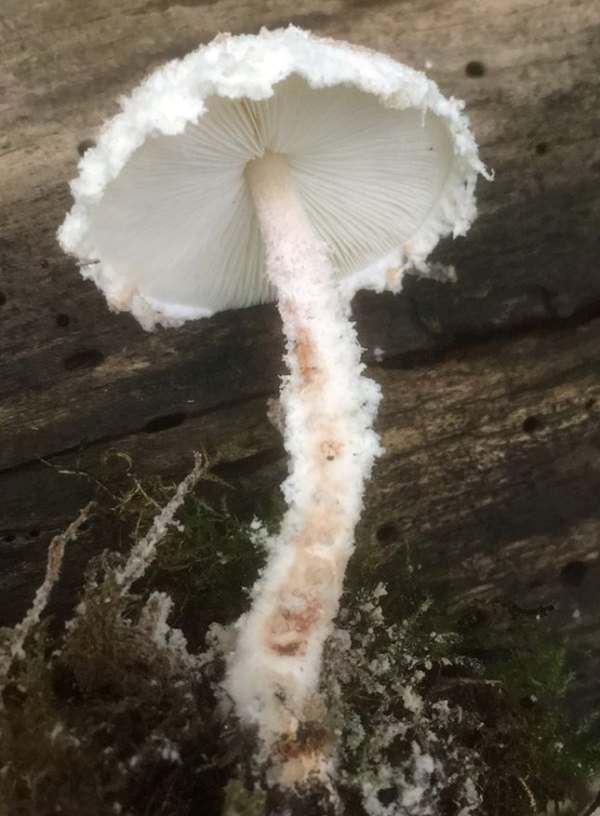
Distribution
A very rare find in central and southern England and Wales, this species is also recorded occasionally in other central and southern European countries including Germany, Holland and France. I have seen this powdercap mushroom as far south as Monchique, in the Algarve region of southern Portugal (picture below).
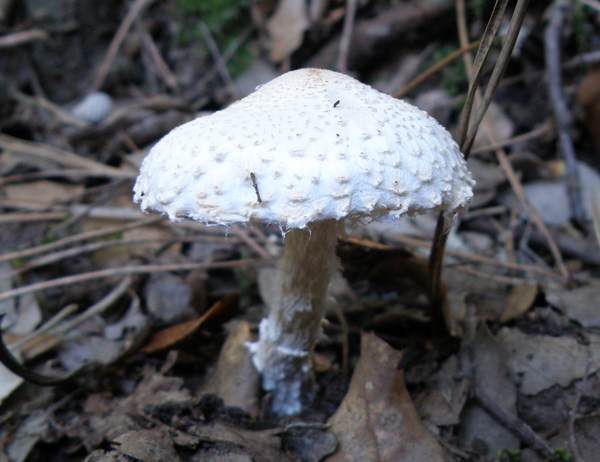
Taxonomic history
When Dutch mycologist Hendrik Sijbert Cornelis Huijsman (1900 - 1986) described this species in 1960 he gave it the scientific name Lepiota pulverulenta. The currently-accepted scientific name Cystolepiota pulverulenta dates from a 1992 publication by Dutch mycologist Else Vellinga.
Synonyms of Cystolepiota pulverulenta include Lepiota pulverulenta Huijsman, Leucoagaricus pulverulentus (Huijsman) Bon, and Pulverolepiota pulverulenta (Huijsman) Bon.
Etymology
The prefix Cysto- means blistered and lepiota comes from Greek words lepis-, meaning scale, and -ot, meaning ear. Blistered scaly- ear fungus is an interpretation, therefore, of the genus name Cystolepiota. The specific epithet pulverulenta is a Latin adjective meaning powdery or dusty (or, if we wanted to be really obscure, we could opt for the little-use English adjective pulverulent). This is indeed a dusty-looking blistery-scaled mushroom!
Identification guide
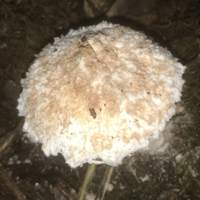
|
Cap
1.5 to 3.5cm across; campanulate or convex with an umbo, not fully flattening; white to yellowish, becoming browner with age, densely covered in large, irregular woolly scales; turning reddish when handled. Woolly vellar scales overhang the cap margin. |
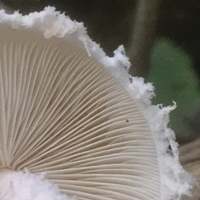 |
Gills
White, moderately crowded, free.
Stem
4 to 6cm long and 2 to 5mm diameter with a basal bulb; white, covered in fluffy vellar scales (small scales near apex; larger scales below), bruising reddish. |
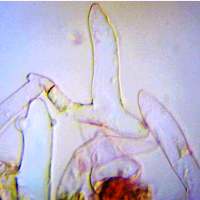 |
Hyphal structure of cap scales
The structure of the fluffy cap scales is a helpful diagnostic feature.
|
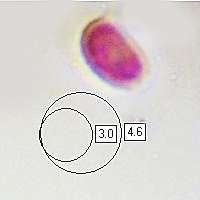 |
Spores
Ellipsoidal, smooth or very slightly rough, 4-5 x 2-3μm.
Spore print
White |
Odour/taste |
No significant odour or taste. |
Habitat & Ecological role |
Saprobic, singly or in small groups, on (usually calcareous) soil under broadleaf and mixed woodland or occasionally with pines; often with Ivy (Hedera spp) or Stinging Nettles Urtica dioica; occasionally on grassy roadside verges. |
Season |
Autumn and winter. |
Culinary Notes
Cystolepiota mushrooms are generally considered inedible, and some species in this genus may be toxic.
Reference Sources
Breitenbach, J & Kränzlin, F. (1995). Fungi of Switzerland Vol. 4; Mykologia Lucerne.
Funga Nordica Vol. 2: 617–620. ed. Knudsen & Vesterholt; Nordsvamp, Copenhagen.
Dictionary of the Fungi; Paul M. Kirk, Paul F. Cannon, David W. Minter and J. A. Stalpers; CABI, 2008
Taxonomic history and synonym information on these pages is drawn from many sources but in particular from the British Mycological Society's GB Checklist of Fungi and (for basidiomycetes) Kew's Checklist of the British & Irish Basidiomycota.
Acknowledgements
This page includes pictures kindly contributed by Simon Harding.
Top of page...
Fascinated by Fungi. Back by popular demand, Pat O'Reilly's best-selling 450-page hardback book is available now. The latest second edition was republished with a sparkling new cover design in September 2022 by Coch-y-Bonddu Books. Full details and copies are available from the publisher's online bookshop...